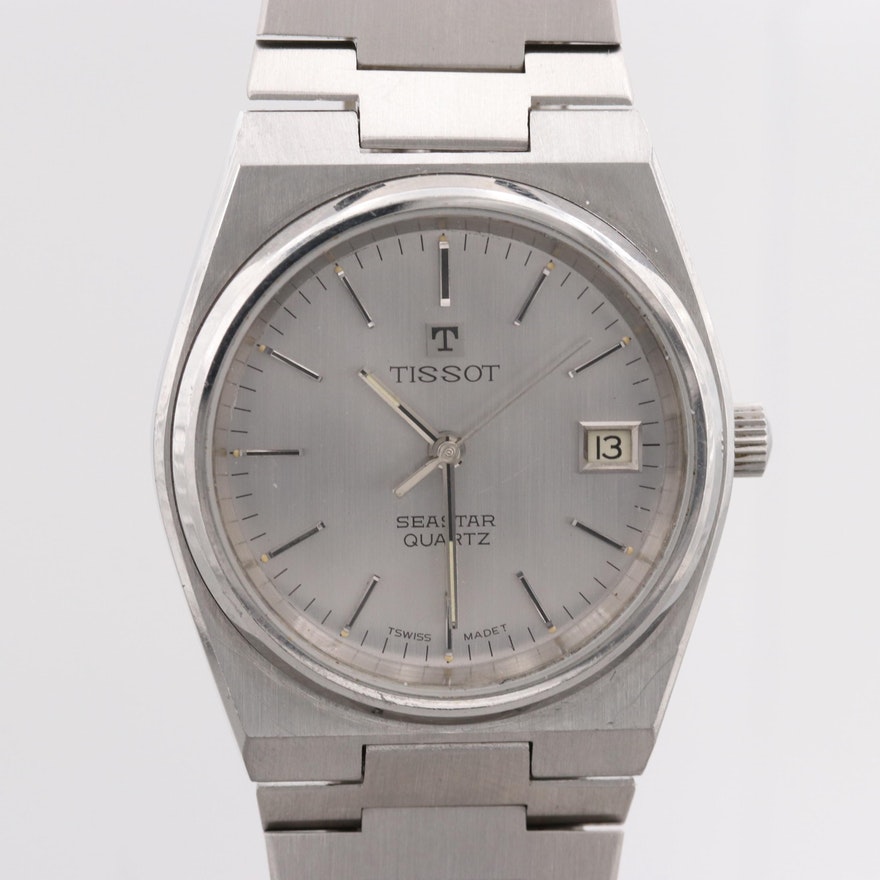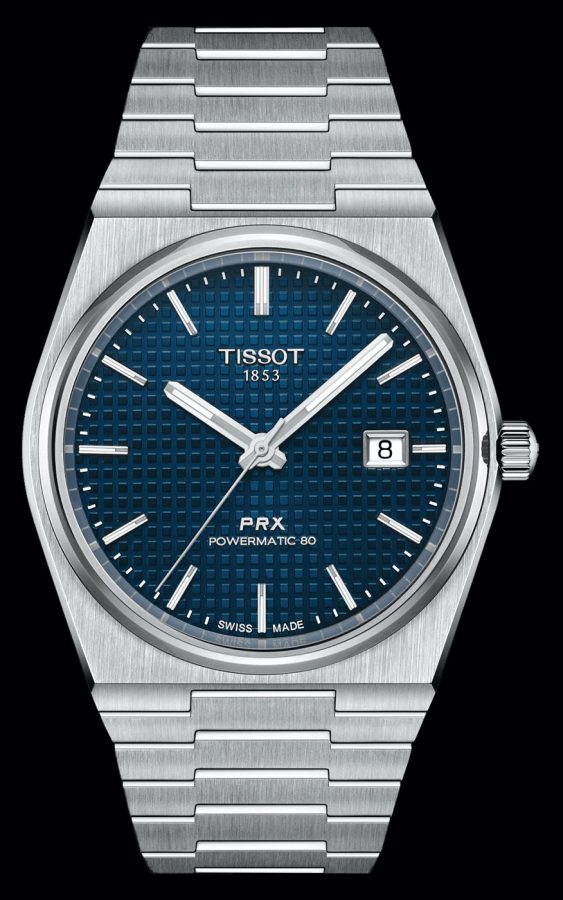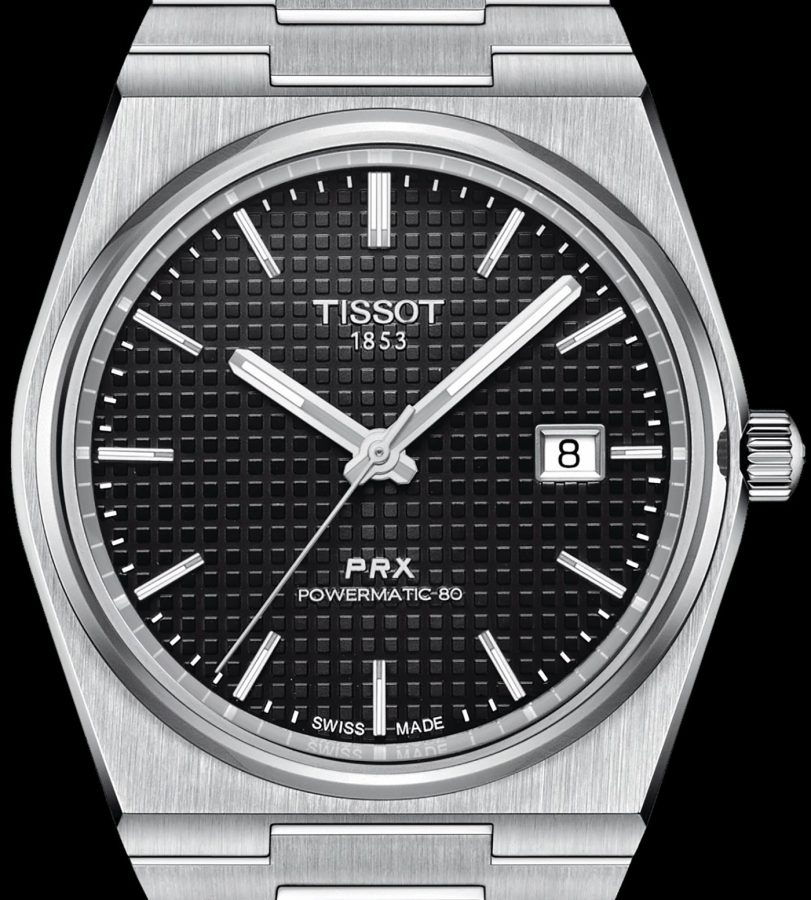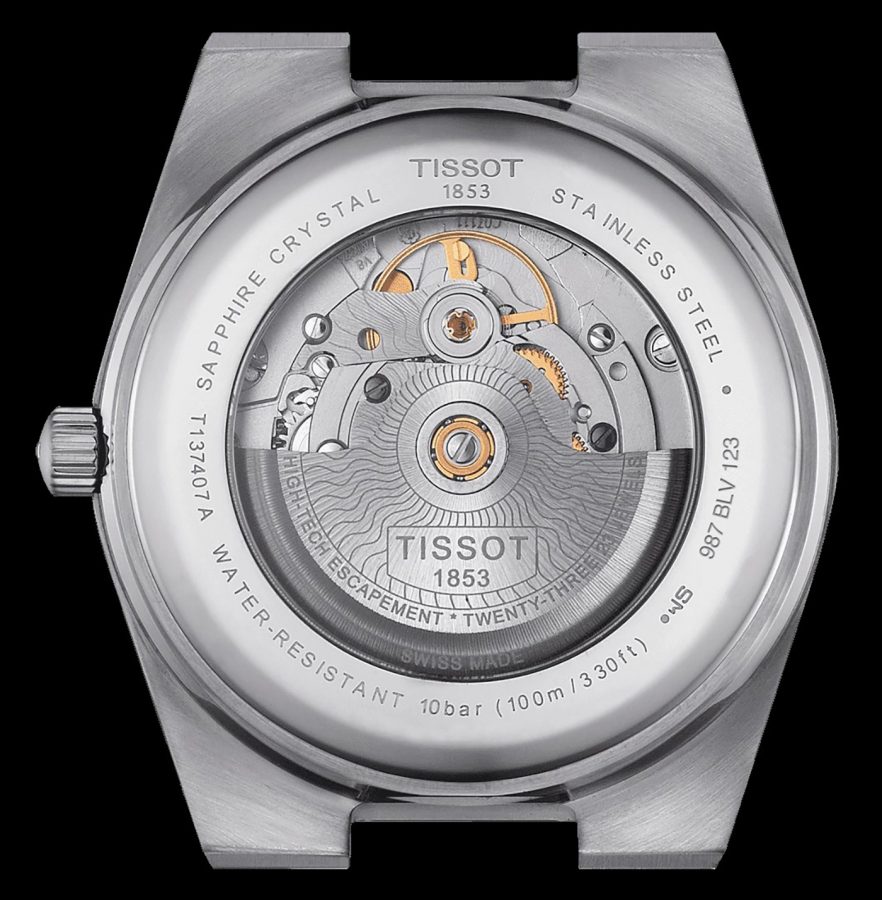There’s been a lot of buzz lately about the new Tissot PRX Powermatic 80. The brand launched the PRX series at the start of the year. But the first model used a quartz movement. Which, while true to the 1970s original, made it less appealing to mechanical watch lovers. An automatic option was always on the horizon though. And a few weeks ago, it arrived. Accompanied by what I would describe as a very reasonable price tag. Even by Tissot standards. So, is the Tissot PRX Powermatic 80 the best luxury steels sports watch under $1k? Can we even call it a ‘luxury’ watch at this price point? Read on to find out.
A (Very) Brief History Of The Tissot PRX Powermatic 80
As I alluded to above, the PRX Powermatic 80 has its roots in the 1970s. 1978 to be precise. Coming near the end of the decade it was somewhat of a late arrival I suppose. Consider that the Royal Oak kicked off the luxury steel sports watch trend in 1972. But then again, Patek’s Nautilus and Vacheron’s 222 didn’t come to market until 1976. So, you could argue Tissot wasn’t that late after all. Plus, they had the advantage of drawing inspiration from their forebears.
The original model was the Tissot Seastar. A sporty model with a slim profile powered by a quartz movement. In very much the same vein as the GP Laureato. Although a bit more down-market. (We were still in the midst of the Quartz crisis at this time to be fair.) As you can see Tissot’s designers took inspiration from the other popular models at the time. And one in particular it seems. If you close one eye and squint, you might mistake the Seastar for a Rolex Oysterquartz Datejust. Both feature tonneau-shaped cases and smooth round bezels. With similar dial designs and layouts as well. Although the Seastar doesn’t have a cyclops over the date of course.

It’s unfair to say though that the Seastar was a direct copy of the Oysterquartz. There are many similar designs like this from the period. The so-called circle-on-a-square aesthetic that seems to work so well. Like its compatriots, the Seastar also featured an integrated steel bracelet. It started wide and then tapered down towards the fold-over clasp closure. Nothing to write home about but a good quality bracelet for the price. Tissot would later change the name from Seastar to PRX. The P stands for Precision. The R stands for Reliability. And the X represents the Roman numeral 10, indicating for 10 meters’ water resistance.
Tissot made lots of different variations of the Seastar over the years. And finding a good example of the model discussed above is actually quite difficult. It’s not collectible per se. Or even expensive. There just don’t seem to be that many of them around. The good news is, with the new Tissot PRX Powermatic 80 you don’t have to worry about that. It’s as close a homage to the original as you can get. With some 21st-century upgrades of course.
The Tissot PRX Powermatic 80

Heritage and vintage re-issue watches are nothing new. Brands have been using this strategy of “digging into their archives” for years now. And with great success might I add. The Tudor Black Bay 58 is a great example. As is the Omega Seamaster 300. Even Seiko got into the act with the awesome SLA017 (among others). The key to this success though is staying true enough to the original, whilst still making a modern watch. And it’s here that Tissot has done a great job.
First of all, the dimensions of the PRX Powermatic 80 are close to identical to the original. The width is 40mm and the length is 39.5mm. Making it well suited to most wrist sizes. At 10.9mm thick it sits flat against the wrist and will slide away under a cuff with ease. The quartz version is even thinner at 10.4mm. The case and bracelet are a mix of brushed and polished surfaces. And the watch gives off that sporty industrial vibe that defined models of this era. Finishing and attention to detail are impressive, particularly at this price point. I’ve heard more than a few people remark it’s on par with far more expensive watches. One thing that is different is that the case is now water resistant to 100m.
The Dial
The dial is a simple affair. Three-hand display with luminous baton markers for the hours. And a date via a framed window at 3 o’clock. People will no doubt complain that the date wheel should be color-coded to the dial. And while I would agree, it’s not a deal breaker for me. A lot of brands continue to do this, and you could make the argument that it improves legibility. It’s one of those things that would annoy me at first and then I would forget about it.

You’ve no doubt already noticed the attractive tapisserie pattern. Very much in the same vein as the Royal Oak. I’m not sure why Tissot has gone for this option as it is sure to draw the ire of purists accusing it of being a wannabe. The most likely reason is to differentiate it from the quartz version. That said, I quite like it and think it works well for the watch. Plus, the PRX Powermatic 80 doesn’t look anything like the Royal Oak. So no one is going to think you’ve bought a poor man’s AP. Ok, some people might think that, but who cares. Take it as a compliment to your business savvy.
The Powermatic Movement
On the reverse of the watch is a sapphire case back so you can see the self-winding movement inside. And it’s here that the PRX Powermatic 80 excels. Tissot calls this movement the Powermatic 80.111. It’s based on the ETA 2824, from Tissot’s stablemate at the Swatch Group. But it uses the brand’s own patented Nivachron balance spring. And offers an impressive three-day (80-hour) power reserve. You won’t get that from too many other models at this price point. It’s also reliable and easy to service.

The PRX Powermatic 80 comes on an integrated steel bracelet. There’s a slight taper down from the case to the butterfly clasp with push-buttons. It’s well constructed and comfortable on the wrist. There’s no micro-adjustment or anything fancy like that. But that would definitely be pushing your luck at this price point. It does have a quick release system though. Making it easy to switch it out for a different strap option from Tissot.
Price & Availability
This is where things get interesting. The recommended retail price of the Tissot PRX Powermatic 80 is US$650. That’s a lot of watch for not very much money. Plus, it’s available to buy now. No ludicrous waiting list or secret handshake required. There’s also a two-tone version with a rose-gold PVD coated bezel and rose gold highlights on the dial for US$675. If you want that authentic 70’s vibe. If you shop around you might even find authorized retailers willing to sell these below list. Not sure it’s worth the effort relative to the saving you would make but can’t hurt to ask the question.
Is It The Best Luxury Sports Watch Under $1k?
There’s a lot of competition out there. Not least of which is being driven by up-and-coming micros who are challenging the status quo. And that makes this latest move from Tissot all the more notable. The PRX Powermatic 80 has got to be one of the best offerings at this price point. From any brand. The quality and finishing are on par with a much more expensive watch. It actually has authentic heritage and major brand credibility. And the automatic movement inside delivers serious performance.
Sure, you could say it’s a homage watch. Even the original from 1978 was something of a homage to more expensive models of the era. But who cares? Tissot is not trying to compete with the Royal Oak or the Nautilus. That would be madness. Instead the brand is doing what it’s always done. Take attractive, popular designs and make them accessible to the masses. But without compromising on practicality or functionality. Plus, you can feel safe wearing this watch anywhere. It’s not hard to see the PRX Powermatic 80 becoming a go to option for serious watch lovers. The ones who don’t want to flex everyday but who also don’t want to wear an Apple watch.
Hat tip to Tissot for another sleeper hit.
Technical Specifications: Tissot PRX Powermatic 80
- Case: 40 mm x 39.5mm x 10.9mm – 316L stainless steel – see-through caseback – scratch resistant sapphire crystal on both side – waterproof to 100 metres / 330 feet.
- Dial: blue, black or white with tapisserie pattern – luminous baton markers and hands – running seconds – date via an aperture at 3 o’clock.
- Movement: POWERMATIC 80.111 – Swiss made – self-winding – 80-hour power reserve – Patented Nivachron balance spring.
- Price: USD 650 – USD 675